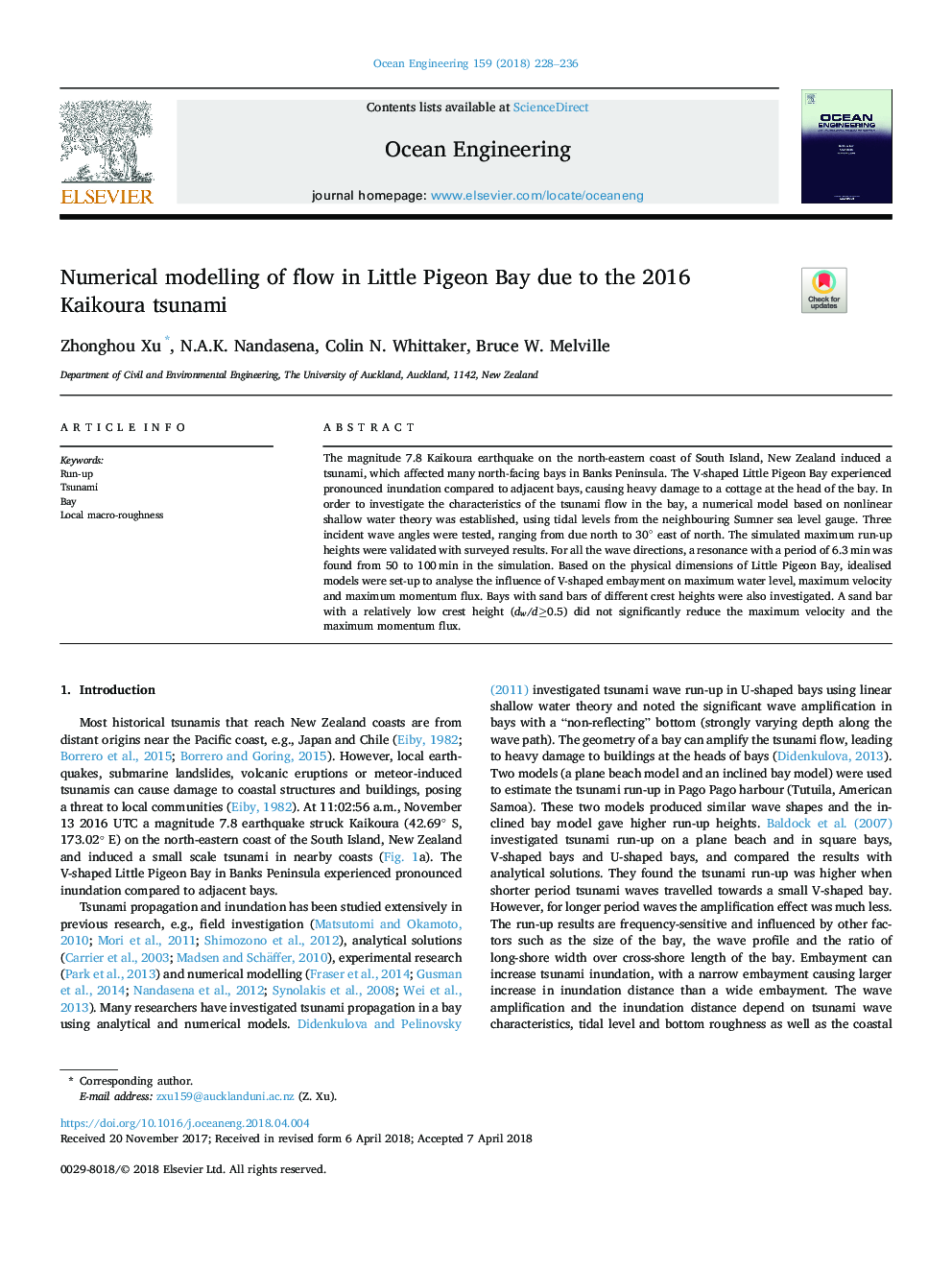| Article ID | Journal | Published Year | Pages | File Type |
|---|---|---|---|---|
| 8062329 | Ocean Engineering | 2018 | 9 Pages |
Abstract
The magnitude 7.8 Kaikoura earthquake on the north-eastern coast of South Island, New Zealand induced a tsunami, which affected many north-facing bays in Banks Peninsula. The V-shaped Little Pigeon Bay experienced pronounced inundation compared to adjacent bays, causing heavy damage to a cottage at the head of the bay. In order to investigate the characteristics of the tsunami flow in the bay, a numerical model based on nonlinear shallow water theory was established, using tidal levels from the neighbouring Sumner sea level gauge. Three incident wave angles were tested, ranging from due north to 30° east of north. The simulated maximum run-up heights were validated with surveyed results. For all the wave directions, a resonance with a period of 6.3â¯min was found from 50 to 100â¯min in the simulation. Based on the physical dimensions of Little Pigeon Bay, idealised models were set-up to analyse the influence of V-shaped embayment on maximum water level, maximum velocity and maximum momentum flux. Bays with sand bars of different crest heights were also investigated. A sand bar with a relatively low crest height (dw/dâ¥0.5) did not significantly reduce the maximum velocity and the maximum momentum flux.
Related Topics
Physical Sciences and Engineering
Engineering
Ocean Engineering
Authors
Zhonghou Xu, N.A.K. Nandasena, Colin N. Whittaker, Bruce W. Melville,
